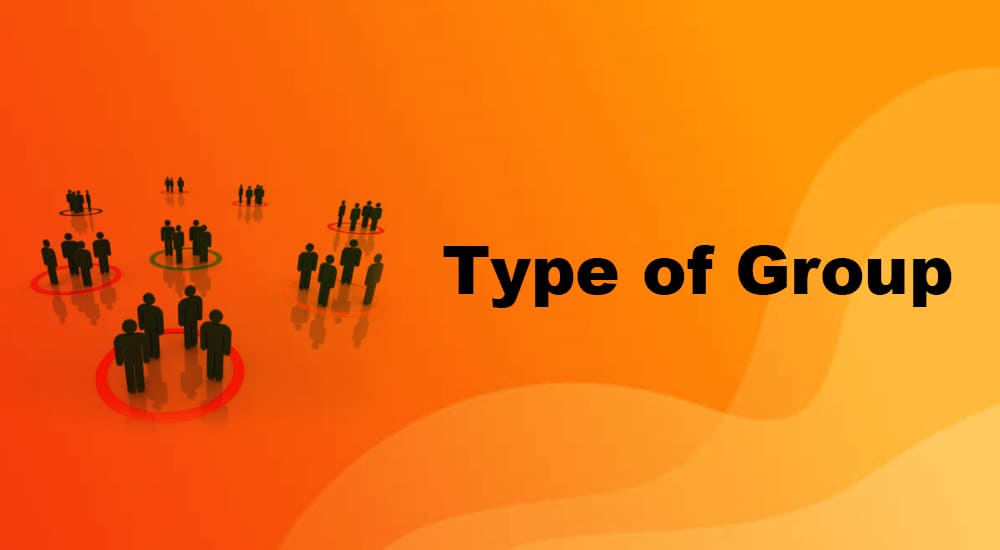In the bustling corporate arenas of the USA, groups form the building blocks of most institutions, from the Silicon Valley tech giants to the non-profit organizations in the heartland.
Understanding the nuances of different group types can significantly impact leadership strategy, organizational structure, and team dynamics.
Definition: Though groups can be classified in many ways, the most popular types of groups are formal and informal groups. Organizations or governments deliberately create formal groups for specific purposes, and informal groups are developed randomly.
Types of Group

Groups can be classified in different ways. Some of them are:
- Formal and Informal Groups
- Primary and Secondary Groups
- Organized and Unorganized Groups
- Temporary and Permanent Groups
- Open and Closed Groups
- Accidental and Purposive Groups
Let’s start with the first classification.
Formal Group
An organization deliberately creates a formal group to achieve an objective. This group has defined criteria for members to join. It has structure, an operating procedure, and is led by a leader. A formal group is also known as a planned group.
An example is the ‘Committee’ system, which is widely adopted by American corporations and highlighted by institutions like Harvard Business Review.
Types of Formal Group
A formal group can be defined in many ways. Some classifications are as follows:
- Temporary Group
- Permanent Group
- Functional Group
- Command Group
- Task Group
- Committee
Temporary Group: These groups are created for the short term and cease to exist once they achieve the objective.
Permanent Group: These groups are permanent and operate for a long time.
Functional Group: These groups are defined according to group members’ positions in an organization, such as engineers, clerks, supervisors, etc.
Command Group: These groups are permanent and exist in every organization. They can be called sections or departments.
Task Group: This temporary group is created to achieve a specific task. It usually consists of influential stakeholders.
Committees: Organizations appoint permanent members of this group to resolve issues. It consists of stakeholders with high positions.
Informal Group
Informal groups are formed by individuals when they communicate with one another. They are not created by organizations and work democratically.
People form these groups to solve their common issues or social needs; the issues may or may not be related to work. These groups work democratically, as noted by the American Sociological Association.
Types of Informal Group
An informal group can be one of the following types:
- Apathetic Groups
- Erratic Groups
- Strategic Groups
- Conservative Groups
Apathetic Groups: These groups are not very active, have minor grievances, and do not have a collective strategy against the organization or government. They lack cohesiveness.
Erratic Groups: As the name suggests, these groups are known for erratic behavior, poor control, mismanagement, and no leadership or autocratic leadership.
Strategic Groups: These are well-formed groups with leadership who follow ground rules and can pressure the organization or government to consider their demands.
Conservative Groups: These groups are conservative, have strong unity, and have specific objectives.
Now, we will discuss other group types in brief.
Primary Group
In primary groups, members directly interact and influence each other. There is no outside interaction. The size of the group is small, and members share a close relationship. These groups are common among close friends and family.
Secondary Group
Secondary groups are larger than primary groups, and they don’t have close relationships like primary groups. These are usually formal groups created to achieve specific objectives. These groups are objective-driven.
Organized Group
When people from the same department or a group of individuals come together to achieve a certain well-defined objective, the group is called an organized group.
Unorganized Group
These groups are randomly created with no specific objective. These groups are temporary, and members have no connection with each other.
Temporary Group
When a group is formed to achieve a specific objective and ceases to exist once it achieves its objective, it is a temporary group. Temporary groups can be formal or informal.
Permanent Group
These groups exist for a longer duration and help organizations run their businesses. They are usually formal and have well-defined structures and procedures.
Open/Closes Group
In an open group, anyone can join and exit at any time. Admission is restricted in a closed group, and only members fulfilling a particular criterion can join.
According to the American Psychological Association, group dynamics can differ significantly based on open or closed structures.
Accidental Group
These groups are formed accidentally, with no purpose or objective. These groups can be temporary or permanent.
Purposive Group
These groups are created to achieve a particular task.
Summary
Groups can be divided into many classifications. Understanding these classifications will help analyze group formation, dynamics, and the working environment and then take advantage of the organization’s interests. As the U.S. Chamber of Commerce emphasized, a profound understanding of these group dynamics can be a game-changer in American workspaces.

thank you for this information. Because of this I have learned a lot.
Thank you so much.
Thank you so much with good product and save us.
Thank you ,
thank you for this knowledge I have gotten today
छान प्रकारे तयार केलं आहे, धन्यवाद